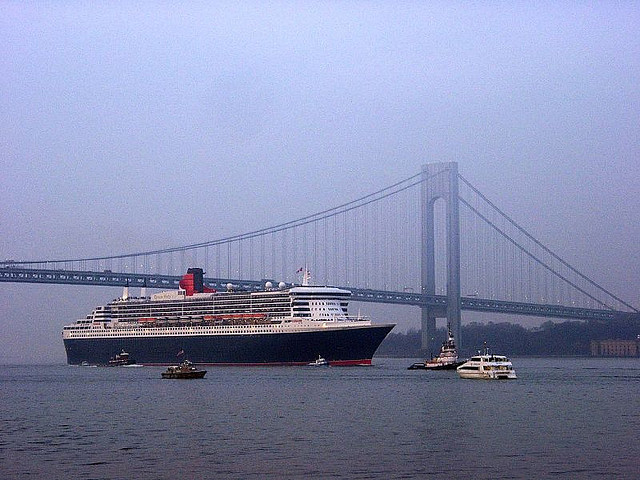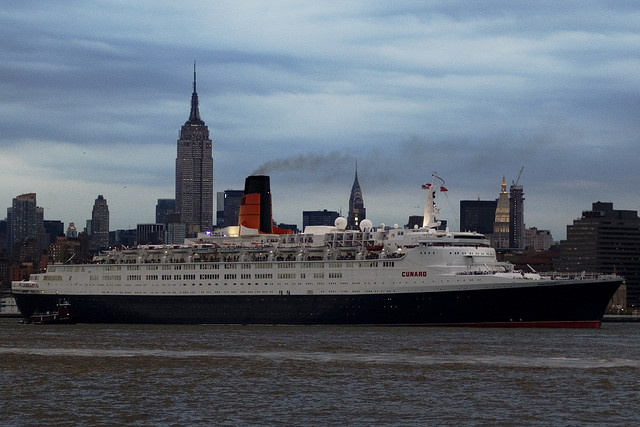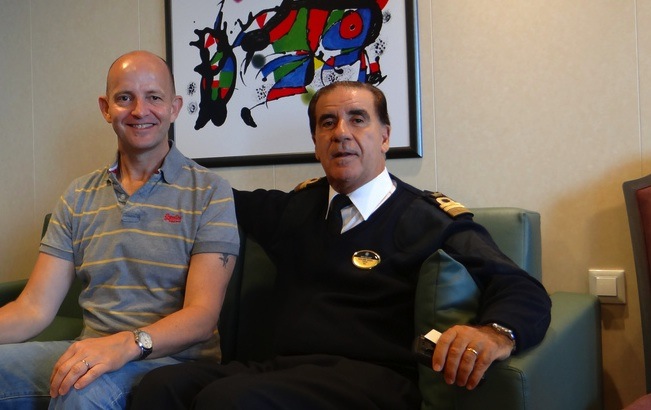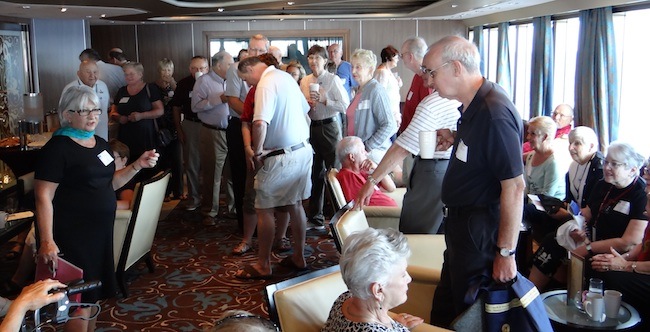Cunard Transatlantic Crossings By Ship : The History and The Heritage
Cunard is the only cruise company with a regular scheduled Transatlantic Crossing Service using an Ocean Liner. This article explores the history of transatlantic crossings and Cunard.
Cunard is the only line in the world that still runs a regular scheduled Transatlantic Crossing service. Today they use the unique and iconic Queen Mary 2, which was designed to be able to cope with the harshness of the route. This makes Cunard different, and unique, to all other cruise lines in the world.
Doing a “Crossing” is seen by cruising fans as an important journey. It remains a “must-do” trip for anyone passionate about cruising and ships. It is, I believe, one of the ultimate experiences in travel.
A “Crossing” harks back to the “golden age” of liner travel, something that Cunard has ensured that it has retained as an essential part of what makes Cunard distinctive and unique.
In my view, there are 5 key ages of transatlantic crossings:
#1: The Pioneering of Crossings:
Crossings of the Atlantic before the 19th Century were infrequent and more like expeditions and were undertaken by sail boats. The development of steamship technology made crossings more regular and scheduled. Samuel Cunard was a major pioneer in the development of regular and scheduled crossings, when he won the contract to carry mail from the UK to the United States. He ran the service by forming the rather cumbersome titled “British and North America Royal Mail Steam-Packet Company”.
From this base, Cunard developed and expanded and for about 30 years offered the fastest way to cross the Atlantic. It became the “Cunard Steamship Company” in 1879, though by then Cunard had lost its edge. It was struggling against lines like the White Star Line (eventual owner of “Titanic”) who had better ships and technology, as well as from the effects of national pride driving the United States, Germany, Italy and France to develop and build transatlantic liner technology and ships.
Cunard emerged to leadership again in the 1930s after the UK government forced a merger with the struggling White Star Line, and helped fund building the Queen Mary, which along with Queen Elizabeth came to represent the flagship of transatlantic crossing.
#2: National Pride and The Need For Speed (“Blue Riband”)
In the 1930s through to the 1950s, the focus was on how fast your liner could cross the Atlantic. The aim was to get passengers across the Atlantic as fast as possible.
Cruise companies, encouraged by and usually funded by their national governments, focused on how to design and build liners that could do the crossing as fast as possible. Ships battled to win the “Blue Riband”. This is an unofficial award and recognition that has its origins in horse racing. While ships competed to record the lowest average speed on the Eastern crossing from Europe to New York, in order to win the “Blue Riband” they also needed to be the fastest crossing westerly against the push of the Gulf Stream. There was also the less famous Hales Award, which was open to any type of ship and not just passenger ships.
35 different Atlantic liners held the Blue Riband, with 25 being British. A staggering 13 Cunard ships held the Blue Riband with the most recent being the Queen Mary (in both 1936 and 1938). The last official holder of the Blue Riband though is the “United States” in 1952. Nowadays, crossing the Atlantic is more about the experience, and taking a more leisurely and indulgent journey.
#3: Transatlantic Crossings During War
Transatlantic liners were integral to both of the World Wars, and also the Falklands War when Cunard’s Queen Elizabeth 2 was used to transport troops to the islands. In fact much of the liner ship building sponsored by governments was partly driven with an eye to possible military application in the event of war.
The sinking of Cunard’s Lusitania on 7 May 1915 by German Submarines during the First World War killed 1198 out of 1959 people on board, and the public outrage was so great it is attributed with leading to the United States entering World War I. Cunard lost many liners in German submarine attacks in the First World War, including the Franconia (1916), Ausonia (1918), Laconia (1917) and the Andania (1918).
In the Second World War, the Queen Mary and Queen Elizabeth were used to ferry two million troops between the USA and Europe, mostly taking American servicemen to Europe when the USA entered the war. They were attributed by Winston Churchill of shortening the war by at least a year as they were so fast they were able to outrun German submarines and so enabled getting so many troops for the Allied Forces.
#4: Transatlantic Death By Jet Liner
After the Second World War, the transatlantic business boomed as people on both sides of the Atlantic wanted to explore each other continents, and the glamour of Crossings was driven by the rich, famous and other celebrities who travelled extensively across the Atlantic by ship.
Then in October 1958 everything changed when scheduled jet liner services started making the crossing faster and offered a new, modern and exciting alternative. By the mid 1960s, it was possible that crew out numbered passengers. Like other companies, Cunard was forced to scale back crossings. They withdrew both the Queen Mary and Queen Elizabeth from service in the mid 1960s. The Queen Elizabeth 2 entered service in 1969, and was the only liner that maintained a regular service, positioning it as a glamourous and exclusive form of travel.
#5: One Scheduled Transatlantic Service: Queen Mary 2
Running a regular Transatlantic Crossing is a major commitment. It requires a ship designed and built as an Ocean Liner. One that can manage the harsh conditions and battering that the North Atlantic throws at it. The Queen Mary 2 is the only such ship in service today. It is a once off design, and as an Ocean Liner is unlike any other cruise ship in the world. Other cruise companies will only run a transatlantic service at the start and end of the European Summer season to reposition their ships, usually from Europe to the Caribbean or perhaps as part of a World Cruise route.
The Queen Mary 2 can cross the Atlantic in significantly fewer days that it runs its schedule on!
When the Queen Mary 2 came into service it offered 6 night crossings to and from Southampton and New York. This was also the length that the Queen Elizabeth used to offer. In 2011 these were increased to 7 nights, and in 2013 these will increase to be 8 nights for many crossings. The reason is the spiralling costs of fuel.
Fuel is a major factor affecting what it costs a cruise ship or liner to complete a journey. By slowing the Queen Mary 2 down it takes less fuel to do the journey and so costs less. Cunard found that the increase in on-board spending from the longer trip time helped make the economics work even better.
Last thought on Cunard and Transatlantic Crossings
Maintaining a scheduled Transatlantic Crossing is core to the Cunard brand, and it is an amazing experience and a classic journey. I have been on crossings on the Queen Elizabeth 2 and the Queen Mary 2. They are remarkable experiences. I am off again in 2 weeks on one again. You should add it onto your “must do”list!

Queen Mary II Apr 22 2004 – 1st time into NY Harbour. Photo by: http://www.flickr.com/photos/badwsky
Read my other tips for travellers articles on Cunard:
- 10 Key Events in the History of Cunard that Defines It
- Cunard Transatlantic Crossing By Ship: History and Heritage
- Is Cunard Retaining Its Distinctiveness Within Carnival Who Now Own It?
- History of afternoon tea – on land and at sea on Cunard
- Behind the scenes tour on Cunard Queen Elizabeth
- Queen Mary 2 Transatlantic Crossing
- Queen Victoria Review
- Queen Elizabeth Review
- Queen Elizabeth 2 Review
- Queen Mary Long Beach
- Cruising the Norwegian Fjords on Queen Elizabeth




